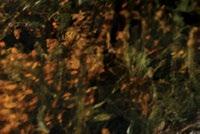





HORSE POWER RODEO FINDS ITS NEW STRIDE
AI DO
TECH’S NEXT BIG BOOM
GRAND DESIGNS GALERIE HALF’S PERFECT HOME







HORSE POWER RODEO FINDS ITS NEW STRIDE
AI DO
TECH’S NEXT BIG BOOM
GRAND DESIGNS GALERIE HALF’S PERFECT HOME



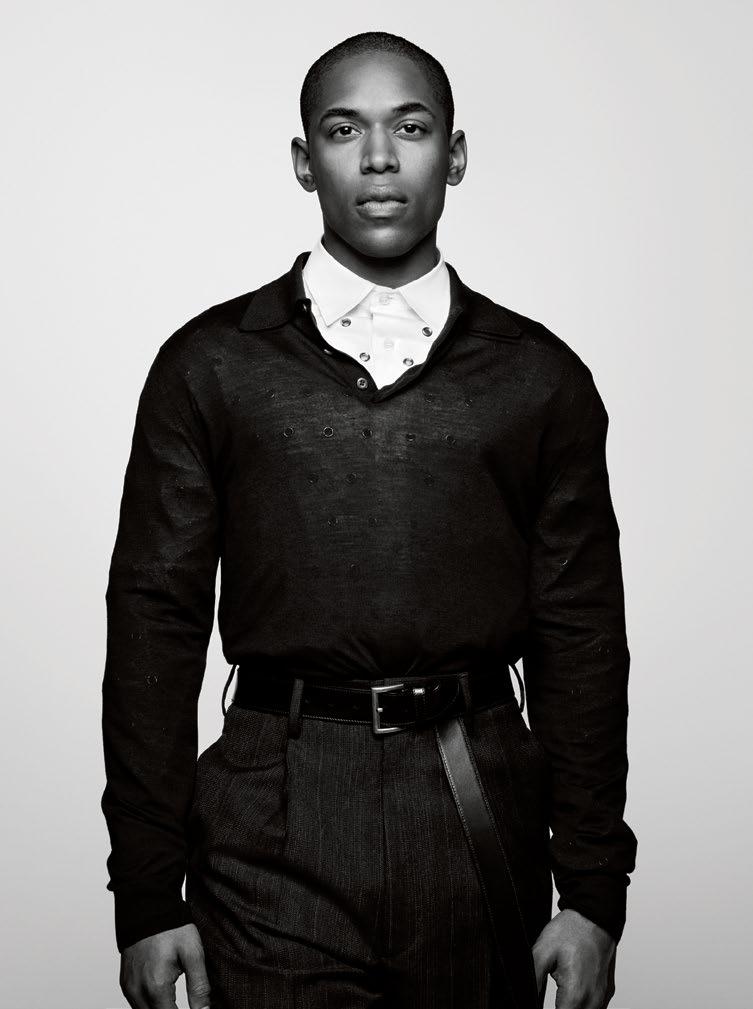

 Prada
Prada










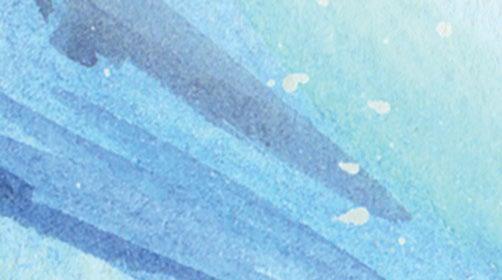























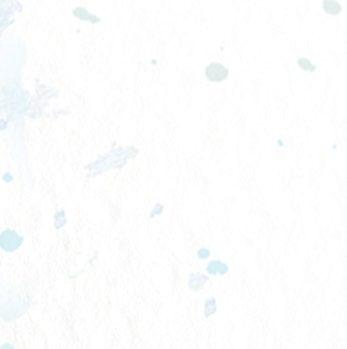









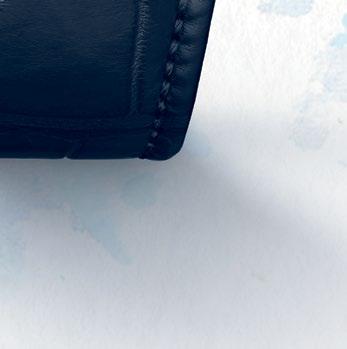











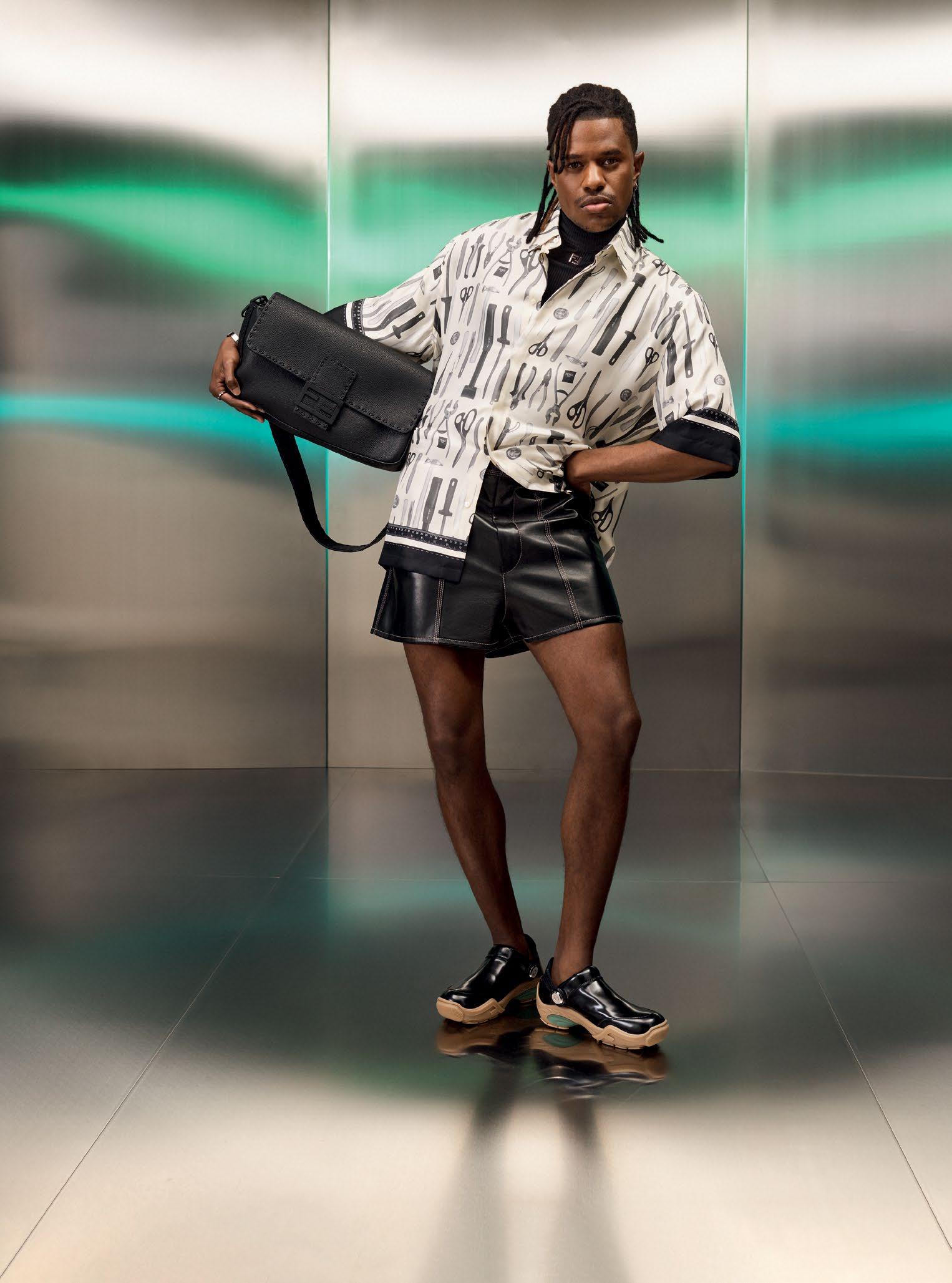

















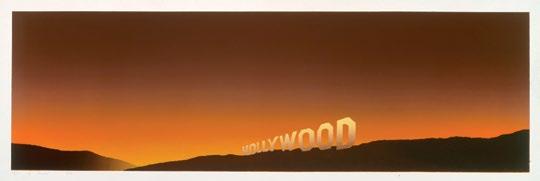


















































































A. Lange & Söhne · A.P.C. · Alexander McQueen · AllSaints · Audemars Piguet · Balenciaga · Balmain · Berluti · Bottega Veneta
Breitling · Brunello Cucinelli · Bucherer 1888 · Burberry · Canada Goose · Cartier · Chopard · Christian Louboutin · Dior Men
Dolce&Gabbana · Fendi · Ferragamo · Gentle Monster · Giorgio Armani · Givenchy · Golden Goose · Gucci · Hermès · Hublot
Hugo Boss · Jaeger-LeCoultre · John Varvatos · Lanvin · Loewe · Loro Piana · Louis Vuitton Men’s · Maison Margiela · Mikimoto
Moncler · Omega · Palm Angels · Panerai · Porsche Design · Prada · Ralph Lauren · Reiss · Roger Dubuis · Rolex · Saint Laurent
Sandro · The Webster · Thom Browne · Tiffany & Co. · Tudor · Vacheron Constantin · Valentino · Versace · Zegna partial listing








 by
by
Saint Laurent
Anthony Vaccarello
Leather mid-top sneakers, $1,090, ysl.com









The idea behind this edition is that we focus on men at the top of their respective games: an actor who makes bold career choices, a retailer-curator who uses his home as a testing ground for innovative interiors, a world-renowned choreographer whose moves are sought by the best and brightest of music and fashion. Throw in a discussion of AI’s role in San Francisco’s revival and you have the ingredients for a fascinating issue.
Chief Creative Officer
Managing Editor SARAH RUTLEDGE
Photo Editor LAUREN WHITE
Fendi










Jamie Dornan may have been one of the world’s top models in his youth, but he made the jump to award-nominated leading man and is now headlining one of Netflix’s most watched series, The Tourist . His career path should be a case study in how to break through stereotypes and excel at every role he turns his hand to.
Graphic Designer
DEAN ALARI
Senior Editors


Washi paper flow sneakers, $1,690, fendi.com



Dancer and choreographer Stephen Galloway has long been known in the fashion world as the man to call for all things movement. He has made a natural progression to music with Miley Cyrus signing him up. Now an L.A. resident, he hints in our profile that movies could be next.
At work, Cameron Smith of Galerie Half surrounds himself with beautiful pieces, so when he goes home to his personal space in Pasadena, does he practice what he preaches? And then some.
So that sums it all up: Lives lived authentically, focused on being your best and truest self, and creating work that inspires — all inside this Golden State of talent and tastemakers. California, you’ve done it again.
GINA TOLLESON
ELIZABETH VARNELL
Publisher RENEE MARCELLO
Executive Director, West Coast




Brunello Cucinelli

Calfskin and suede sneakers, $995, brunellocucinelli.com



 JENNIFER SMITH FOUNDER, EDITORIAL DIRECTOR AND CEO
JENNIFER SMITH FOUNDER, EDITORIAL DIRECTOR AND CEO
Director Digital, Sales & Marketing AMY LIPSON
Information Technology Executive Director SANDY HUBBARD
Sales Development Manager
ANNE MARIE PROVENZA

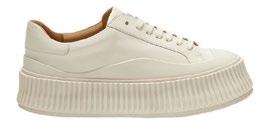





Low-top sneakers, $820, jilsander.com









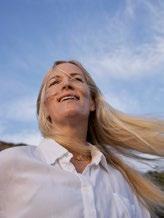

Controller LEILA ALLEN
Contributors
MARK GRIFFIN CHAMPION, AMELIA FLEETWOOD, BOO GEORGE, MARTHA HAYES, DAVID NASH, BILLAL TARIGHT, CHRIS WALLACE
C PUBLISHING





Gucci



Leather sneakers, $950, gucci.com













CT-07 sneakers, $990, celine.com
Director and Photographer Boo George shot our cover and feature on Jamie Dornan, “Game Face” (page 26). His love of the lens began in Northern Ireland when his father gave him his first camera. He has worked with many brands, including Emporio Armani, Range Rover Evoque, Ralph Lauren, Hermès, Levi’s, Louis Vuitton, Erdem, Vogue, and Calvin Klein. MY
C SPOTS • Flea markets in Eureka • La Oaxaquena Taco Truck on Lincoln Blvd. • Monster trucks in Lompoc
The former fashion director of GQ and editor of GQ Style, Luke Day has worked with celebrities like Timothée Chalamet, Jodie Comer, and Lil Nas X. He has styled for brands including Gucci, Boss, and Calvin Klein and is currently fashion director at Man About Town. For this issue, he styled Jamie Dornan for our cover feature, “Game Face” (page 26). MY C SPOTS • Boot Star on Sunset to stock up on belts and boots • Members-only club
The Magic Castle • Jim’s Western Wear for Levi’s
Amelia Fleetwood, who penned “New Frontier” (page 40), has lived in Ojai for 12 years. She has been published in magazines, including Architectural Digest and Domino, and has also has contributed to several books. She can be found in her studio painting and working on a book of short stories. MY
C SPOTS • Hiking in Black Lava Butte and Flat Top Mesa National Reserve • STAY Zero Proof for nonalcoholic drinks • Ojai Noodle House for delicious Vietnamese home cooking
The author of “Game Face” (page 26), Chris Wallace is a writer and photographer based in New York City. His biography of Peter Beard, Twentieth-Century Man, was published by Ecco last summer. Previously he was the U.S. editor of MR PORTER and executive editor of Interview magazine.
MY C SPOTS • Museum Trail in Palm Springs • Wyntoon, the Hearst estate in McCloud by the Oregon border, is a fairy tale come to life • Lone Pine as a backdrop for Wild West fantasies
2064 ALAMEDA PADRE SERRA, SUITE 120, SANTA BARBARA, CA 93103
T: 310-393-3800
SUBSCRIBE@MAGAZINEC.COM MAGAZINEC.COM









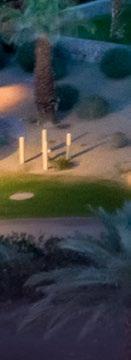






This spring, experience North America’s only true desert oasis. Discover two unique hotels nestled in a lush desert oasis: the historic four-diamond Inn at Death Valley and the adventure-focused Ranch at Death Valley, surrounded by the largest national park in the lower 48, with 3.4 million acres to explore. Learn more at OasisAtDeathValley.com ®


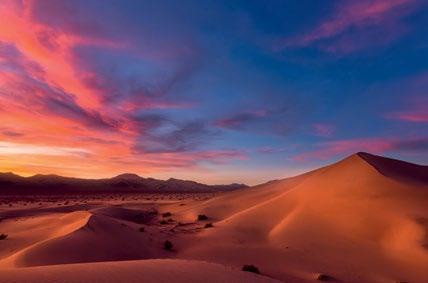






























As men’s creative director of LOUIS VUITTON, Pharrell Williams brings not only his own celebrity to the table but also that of his VIP friends. This spring the musician and producer tapped his longtime pal and collaborator Tyler, the Creator for a spirited capsule collection. Tyler, who has two fashion brands of his own, is a natural fit: Just look at the whimsical, colorful prep-meets-golf look he blended with Williams’ signature dandy approach. Highlights are the short suits (one of Tyler’s perennial favorites), flowing pleated pants, bowling shirts, tennis sweaters, and varsity jackets. All the pieces are decorated in the “Craggy Monogram,” a wobbly riff on Vuitton’s iconic logo that’s hand-drawn by Tyler. us.louisvuitton.com. M.B.

Disciples of Ray and Charles Eames have a new place to worship with the opening of the EAMES INSTITUTE OF INFINITE CURIOSITY’s new headquarters in Richmond. The showplace consists of a Gallery, Collections Center, and Archives Study Center housing more than 40,000 artifacts. The pieces range from prototypes, products, and tools to personal items.
Founded in 2022, the institute’s mission is to share the Eames’ work and influence on contemporary design. Tickets will be released to the public on the first of each month, with guided tours led by Llisa Demetrios, chief curator and the Eames’ granddaughter. Following each tour, visitors will have the opportunity to purchase books, vintage items, and objects inspired by pieces from the archive. 1330 S. 51st St., Richmond; eamesinstitute.org. D.N.



Whether using signs, sayings, and slang; shooting images of architecture; making drawings with gunpowder; or painting landscapes superimposed with text, ED RUSCHA has held a mirror to American society for decades. In his adopted hometown of Los Angeles, the artist is now the subject of LACMA’s Ed Ruscha/Now Then, a monumental cross-media retrospective that includes 250 works spanning 60 years. His 1968 painting Hollywood, which depicts the sign along a
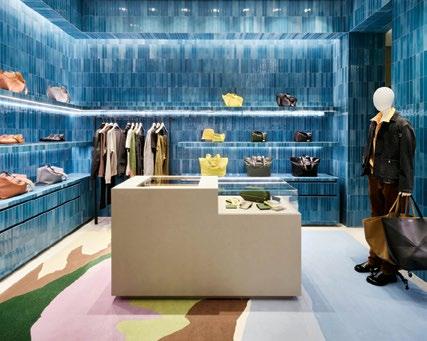
bright horizon line, is here, as is Los Angeles County Museum of Art on Fire from the same era. Ruscha’s book Every Building on the Sunset Strip, shot from the bed of a pickup truck, is also included, as is Chocolate Room, an installation made from paste derived from cacao and cocoa butter screen-printed onto paper and refabricated for the show. Ruscha’s 1992 Cameo Cuts print depicting “The End” of a scratched film reel only furthers his lifelong examination of phrases and places. April 7–October 6. 5905 Wilshire Blvd., L.A., 323-857-6000; lacma.org. E.V.
Dubbed “Casa Loewe” by the Madrid-based brand’s creative director, Jonathan Anderson, the concept for LOEWE’s most recent brick and mortar in San Jose’s Westfield Valley Fair shopping mecca is rooted squarely in contemporary design and artisanal tradition. Throughout the 2,500-sq.-ft. space, works by Japanese















































Twenty years after its debut, DIOR’s sought-after timepiece the Chiffre Rouge (or “Red Figure”) is getting a refresh with the release of eight new styles being launched throughout the year (five have already landed). All have a throughline that pays homage to iconography and design motifs from the maison: The number eight, or Monsieur Dior’s lucky number, is highlighted in red on the black dial and Dior’s iconic interlacing lattice pattern is subtly woven into the watch’s case, dial, and straps. The Chiffre Rouge also comes packed with features every horology aficionado will appreciate and two case sizes (38mm and 41mm). It also boasts chronometer and tourbillon movements, finishes that range from matte black to rose gold to a flashy rainbow-hued case, and interchangeable straps of rubber or leather. dior.com M.B.

The McLAREN GTS is more than just a supercar; it’s a masterwork. Beneath its sleek exterior lies a formidable 4.0liter twin-turbocharged V8 engine, unleashing 635PS at 8,000 rpm. Despite this overwhelming power supply, the drive remains remarkably smooth and efficient, accompanied by a reassuring exhaust bass note. The M840T combustion system meticulously orchestrates ignition timing, ensuring optimal efficiency, and a “Quiet Start” mode caters to discreet getaways. Navigating California’s diverse terrain is a breeze with the Electronic Stability Control, which provides stability and security on all roads, from coastal highways to winding mountain passes. Engage sport mode on the scenic 101, and the GTS transforms the journey into an exhilarating racetrack experience — all within legal speed limits, of course. cars.mclaren.com. A.B.
01. Pharrell Williams collaborated with Tyler, the Creator on Louis Vuitton’s new capsule. 02. Ed Ruscha’s retrospective at LACMA runs until October 6. 03. Dior Chiffre Rouge watch, starting at $7,900. 04. Chairs on display at the Eames Institute. 05. The McLaren GTS combines power and sophistication. 06. Blue ceramic subway tiles highlight the new Loewe.
















































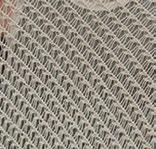





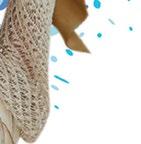






















BROWN makes a splash on the West Coast with its newest boutique, nestled in the Montecito Country Mart, the ideal seaside spot for the purveyors of boatfriendly ready-to-wear so alluring that Chanel snapped up the brand in 2018. Founder Adam Brown launched the brand in 2007, specializing in elegant clothes that would look as good poolside as they would running into town for a quick bite. Keep an eye out for OB’s breezy knit polos, airy linen button-ups, and beloved Bulldog and Setter swim trunks, which come in a wide array of colors and prints and have been spotted on Hugh Jackman, Ryan Reynolds, and Daniel Craig as James Bond in Skyfall 1016 Coast Village Rd., Montecito; orlebarbrown.com. M.B.

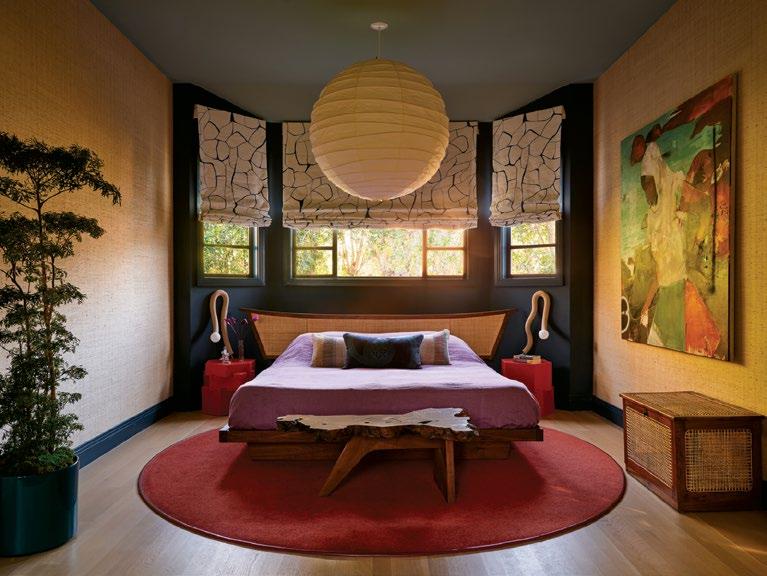

05.
A fabled San Francisco nightclub sees new life and a name change with the unveiling of STARLITE atop the Beacon Grand Hotel in Union Square. Previously opened in 1928, the former Sir Frances Drake Hotel’s 21st-floor hot spot was known first as the Starlite Roof. For its February redux, the rooftop cocktail bar returned with lavish Art Deco–inspired interiors designed by Maison A’s Alice Crumeyrolle that complement the venue’s stunning 360-degree city views. A sumptuous cocktail menu was shaken to perfection by Trick Dog’s Scott Baird, while Washington, D.C.–based chef Johnny Spero from Michelin-starred Reverie dreamed up a menu that includes a hot fried chicken bun. In the evenings, guests can mingle and groove to curated vinyl sets from music director and party host Nina Tarr. 450 Powell St., 21st Fl., S.F., 415-395-8528; starlitesf.com. D.N.

Inspired by the electricity and eclecticism of the world around him, fourth-generation Angeleno OLIVER M. FURTH knows a thing or two about sparking joy. After all, the AD100 and Elle Decor A-list designer has been infusing it into the homes and lives of clients across the globe since opening his eponymous design studio in 2004. After completing countless projects over the past two decades, Firth has finally compiled the best of the best for his first monograph, which

drops in April. OP! Optimistic Interiors (Rizzoli, $50) is a tour de force of sophistication, color, whimsy, and (of course) optimism that showcases the designer’s trademark aesthetic. Thumbing through the hefty volume — filled with 250 color photographs documenting his favorite spaces — the design dynamo’s work jumps off the page like crayons spilling out of a box. In fact, if someone told us that Pharrell’s hit song “Happy” was actually inspired by a room Furth designed, we’d believe it D.N.
Industrial designer JONATHAN WARD’s hand-assembled ICON utility vehicles can take 10 to 12 months to rework. But Ward is also a serial craftsman who has recently launched two new lines: J. Ward Collection leather goods, made in Italy, and Campfire Coats, which he sews by hand from a trove of vintage textiles and Pendleton fabrics at his Chatsworth production facility. “I’m a maniac for the details,” he says. Having studied fine art and woodworking, Ward says he’s noticed how many details have been abandoned for production-friendly processes. His bags, flasks, and wallets from vegetable-tanned leathers include beveled and burnished edges and solid brass hardware that improves with age; the often silk-lined jackets and vests with buffalo nickel or silver buttons are tailored for modern fits. icon4x4.com. E.V.
An omakase sushi spot in a parking lot in Beverly Hills? You heard right. Nestled beneath The Hideaway on the primest of locations on Rodeo Drive, SUSHI NOTE OMAKASE is an intimate 14-seat setup and 20-course culinary journey helmed by Earl Aguilar and his mentor, Kiminobu Saito. The pair met at Sherman Oaks’ original Sushi Note outpost before opening this second enclave, which combines Japanese tradition with speakeasy vibes. Sample Saito’s choicest cuts of Spanish bluefin tuna and silver-skinned kohada before bottarga on amadai and smoky bonito cured in brandy explode on the taste buds. With a team of certified sommeliers, expect excellent wine pairings curated by beverage director Ian Lokey to elevate each dish. Tradition and innovation in every bite. sushinoteomakase.com. A.B.
05.

The brand Jil Sander, founded by the German designer of the same name, is known as one of the pioneering forces in minimalism, taking the fashion world by storm in the 1990s with her stark, elegant vision of womanhood.
Since 2017, it’s been overseen by Luke and Lucie Meyer, who have kept that spirit alive. Last month, during the Frieze art fair, the brand opened a store on the far west side of Beverly Hills, which is their only standalone shop in the city (they have another location in South Coast Plaza). At 4,100 sq. ft., the Johnston Marklee–designed space is an airy white box with skylights. A wall of steel-framed windows leads out to a small courtyard and features brushed metal displays for accessories and furniture. The whole thing recalls one of Sander’s most famous quotes: “I am convinced that there can be luxury in simplicity.” jilsandercom. M.B.
After excelling at dance and design, STEPHEN GALLOWAY is bringing his singular talents to music
The evocative L.A. skyline, the YSL costume changes, and that pool: The video for Miley Cyrus’ Grammy Award–winning song “Flowers” is memorable for many reasons, but it’s the way she moves so rhythmically, intentionally, and powerfully from frame to frame that really stands out. It’s the work of choreographer Stephen Galloway, so it’s no wonder Cyrus told him, “You’re never leaving; do you know that?”
Galloway has that effect on people. That’s the simplest way to explain how a former principal dancer for Ballet Frankfurt (with an 18-year tenure under the influential William Forsythe) has enjoyed such a multifaceted career, including two decades as a creative consultant and choreographer for the Rolling Stones and a seven-year stint as art director for Japanese designer Issey Miyake in the 1990s.
“People find it difficult to believe it’s possible to lead or create an organic evolution of a career,” says Galloway, who relocated to Los Angeles in 2016 after 30 years in Frankfurt, where he segued from dance into costume design. “They feel there must be some degree of hustle. I am the truest representation of that not being the case. Being in the right place at the right time is how I’ve lived my entire career.”
Today Galloway, who was born in Tennessee but grew up in Pennsylvania before moving to Germany at 17 on a scholarship, is in serious demand as a “creative movement director.” It’s a title he created when he started collaborating with Dutch fashion photographers Inez van Lamsweerde and Vinoodh Matadin. Naomi Campbell channeling Diana Ross on the cover of W magazine? Lady Gaga’s writhing movements in Tom Ford’s viral “Soul Train” runway show? Both the result of Galloway’s gift for storytelling through movement.
“We’d be shooting a hair commercial and someone would be like, ‘Why do we need a choreographer?’ Inez would be like, ‘Wait until you meet Stephen Galloway.’ That’s how the whole thing began,” he explains. “I joke that we should have copyrighted it. Almost every agency now has a form of creative movement director.”
Galloway first gravitated toward L.A. when his aunt Melba, who lived here, was nearing the end of her life. Initially he moved into a high-rise apartment at Hollywood Proper Residences; he has since purchased “the most beautiful house I will never leave” in Hancock Park. “The city has been incredible to me, I think, because I didn’t set out to do anything but live here,” he says. Galloway travels frequently to New York and Europe for work and spends his downtime in L.A. watching old-school British period dramas like Foyle’s War and Rumpole of the Bailey on BritBox. “I feel like I know everyone and no one at the same time.”
Where does he get inspiration?
“From the loneliness that is around every corner if you are able to see it,” he muses. That, and a certain luxury grocery store. “I contribute diligently to the budget of Erewhon,” he says, laughing. “I love these little keto chocolate bites that cost $20 for four. It’s like, ‘You’re eating all four at the same time.’ ‘Yeah, but it’s keto!’ ”
As for the future, Galloway is, predictably, buzzing with ideas. He would like to publish a book about his unconventional journey, but for now film feels like the logical next step. “I’m looking forward to expanding into film and


motion in a more directorial way,” he hints. “Everything seems to be leading in that direction for me.” Not that it’s a goal, as such. Galloway, after all, doesn’t work like that. “I don’t know if it’s an ambition more than the next evolution,” he says.
For someone who has helped create
WORDS BY MARTHA HAYES

» I don’t necessarily view my work as achievements because they are part of me and what I am doing. «
some of the most iconic images in fashion photography and some of the most iconic performances (hello, Miley’s recent tribute to Tina Turner at the Grammys), what does Galloway consider his great achievement?
“I don’t necessarily view my work as achievements because they are parts of me and what I’m doing. They are not for me to celebrate — they are wholeheartedly given to other people to celebrate for me,” he says with a smile. “But I think my greatest achievements are possibly still to come.” •


MORTLACH, the single malt whisky from Scotland’s northeast Speyside region, is bolstering its already formidable design bona fides by partnering with Philippe Starck as its first creative director. The French designer and industrial architect — and the prolific mind behind the Louis Ghost chair — is known for his restrained yet fantastical hotels, restaurants, yachts, furniture, and must-have objects. Now he’s pairing with the umami-like flavors of the 200-yearold Scotch whisky known for its singular distillation process. Starck’s take on the Beast of Dufftown, named for the drink’s powerful flavor, will result in the Mortlach x Starck debut collection, out this spring. Although the designer notes the whisky’s mix of nature and science has always been ahead of its time, each bottle may finally get its due. mortlach.com. E.V.


Remember BAROO, the Hollywood strip-mall café where Korean chef Kwang Uh and his business partner Matthew Kim turned out experimental fermentation-focused dishes at unbelievably modest prices? Even though the innovative spot was wildly popular and much lauded by the food world, it shut down in 2018. Meanwhile, Uh married GM Mina Park. Five years later, the couple found a contemporary space in DTLA and opened with an eight-course tasting menu at $110 with the intention “to serve food with a beginner’s mind.” That sounds about right from a chef with unbridled curiosity who picked up his aesthetic from temple cooking in South Korea. The menu is updated frequently, and every dish is surprising. There’s nothing like it. 905 E. 2nd St., #109, L.A., 213-2217967; baroolosangeles.com. S.I.V.























Hip hop is more than just a musical genre, explains Todd Boyd, author of RAPPER’S DELUXE: HOW HIP HOP MADE THE WORLD (Phaidon, $79.95). It’s a lyrical-minded lifestyle that permeates every aspect of our society, including fashion, art, luxury brands, TV and movies, sports, and politics. Boyd, a USC professor and media commentator, excavates 50 years of American history, exploring how rap music laid the foundation for the broader culture of hip hop. Alongside hundreds of photos of advertisements, album and magazine covers, TV and film stills, and sports and political posters, Boyd evokes the roots of hip hop in the Bronx in 1970s New York City, where acts like Sugarhill Gang, Curtis Blow, and Afrika Bambaataa

began to gain traction in clubs and reach a wider audience. He also makes connections to the Golden State, including the rise of the Black Panther movement in San Francisco and the tongue-in-cheek Blaxploitation films out of Hollywood. By the ’90s, artists like Ice Cube began to produce work depicting gritty life in South Central L.A. Albums like Straight Outta Compton and films such as John Singleton’ s Boyz n the Hood “solidified L.A. as the center of hip hop culture” and led to the infamous stylistic debates between East Coast and West Coast styles. Boyd notes how hip hop converged with significant moments over the past half century, including Colin Kaepernick famously taking a knee against police brutality. As they say in “Rapper’ s Delight,” the beat don’t stop. S.R.










and the
to throughout his career, long before hashtags shed light on the same sentiments. Loans from numerous public and private collections, including the painter’s estate, fill the GAGOSIAN and Fred Hoffman–curated exhibition, reuniting 30 works the Brooklyn-born artist made during his West Coast stays. New City Editions founder Hoffman met Basquiat in Venice, and the pair developed the large-scale silk screens in addition to the canvases. Now the combination of phrases and images again play off each other like notes in the 1983 triptych Horn Players Through June 1. 456 N. Camden Dr., Beverly Hills, 310-271-9400; gagosian.com. E.V.










Luggage innovator RIMOWA is putting down roots in Beverly Hills even as its gleaming aerodynamic luggage continues to roll across the newly refreshed 1,400-sq.-ft. boutique. The interior, formerly a pop-up housing the German-engineered suitcases alongside nylon backpacks, totes, and weekenders, is now lined in floorto-ceiling recycled wood with deep grooves echoing the aviation-inspired lightweight aluminum designs the company first pioneered in 1937. Also inside is a counter for personalization and repairs. All the latest collections are here, and the lightweight polycarbonate Essential designs join Hybrids made of aluminum and polycarbonate and leather-covered Distinct luggage. Rounding out the mix are Signature bags made with regenerated nylon and emblazoned with the maison’s monogram. 201A N. Rodeo Dr., Beverly Hills, 310-304-0305; rimowa.com. E.V.

Few things better encapsulate the idea of California living than a beachfront bike ride, and few companies are better equipped to help than MATERIA, the Newport Beach–based company that specializes in eco-friendly wooden bicycles. Take its beach cruiser, the Ambre, with a frame that comes in either ash or redwood, marrying a sophisticated look with unexpected materials. Why wood, you may ask? The natural material absorbs as much as four times the amount of vibration as carbon, offering an even, effortless ride while providing a shocking amount of durability. The bikes are lightweight, hardworking, and eminently stylish, and the brand has already worked with the French swimwear brand Vilebrequin on a limited-edition model. materiabikes.com. M.B.
Jean-Michel Basquiat’s 1983 painting Hollywood Africans combines text, “seven stars,” drawing, and painting — including a self-portrait with fellow artists Toxic and Rammellzee — plus a palette of sunny hues on a three-paneled work the artist created while living in Larry Gagosian’s Venice Beach residence. The canvas, part of the art dealer’s latest Beverly Hills show, Made on Market Street, foregrounds Basquiat’s voice, developing symbolism themes he returned















Spurred on by the hit film, the off-duty aristocrat look is all the rage












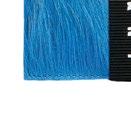


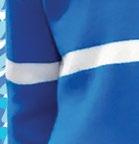





























Balenciaga













Loewe


Hermès

As the chip rush gathers pace, things are looking up for BIG TECH’ s capital cityWORDS BY STEVE SANDERS
The world has reached a “tipping point,” Jensen Huang, the billionaire boss of semiconductor giant Nvidia, declared in February. “A whole new industry is being formed.” He was referring, of course, to artificial intelligence. Demand for the Santa Clara company’s specialized chips, which are used to run the most complex AI models, has transformed it from a relatively anonymous hardware maker to the world’s fourth most valuable company. Its stock has risen fivefold in a year, pushing the market value to an astonishing $1.9 trillion, adding more than $50 billion to Huang’s net worth, and turning many of Nvidia’s rank-and-file workers into millionaires.
The question is: Will the AI gold rush have a similar transformative effect for San Francisco, the once tech-savvy, now weary city that has become the center of the AI boom? Over the past five years, San Francisco has lost 8.6 percent of its population. A trickle of people fleeing the eye-watering rents became a rush when the pandemic struck and the tech industry leaned into the work-from-anywhere ethos. Lurid viral videos of homeless encampments, open-air drug use, and brazen crime turned it into a cautionary
ILLUSTRATION
BY DEREK CHARMtale, a once-great metropolis supposedly entering a spiral of decline.
The city’s commercial real estate market has come to a screeching halt. As of December 2023, commercial vacancies hit 6.7 million sq. ft., or 35.9 percent — a record low, according to data compiled by CBRE. To put that into perspective, it’s the equivalent of emptying the city’s three biggest buildings (Salesforce Tower, the Transamerica Pyramid, and 181 Fremont) nearly three times over. “The situation is dire if you’re looking at it from a current property owner or investor perspective. There will be more
» Venture capitalists have plowed more than $50 billion into thousands of AI start-ups since 2023. «
foreclosures, receiverships, and short sales,” said Tom Poser, senior managing director at commercial real estate advisory firm Newmark. “Those buildings will be reset.”
But amid the gloom, AI has emerged to offer a glimmer of hope for a city that has a knack for taking center stage when it comes to world-changing manias, from the gold rush to the arrival of the internet. The “Big Bang” moment for AI came in November 2022, when San Francisco–based company OpenAI launched ChatGPT, the chatbot that wowed the world with its ability to write poetry, pass standardized tests, and even develop computer code.
ChatGPT’s arrival sparked a boom that has shown no sign of slowing. Venture capitalists have plowed more than $50 billion into thousands of AI start-ups since 2023, and many are based in San Francisco. Industry insiders estimate these start-ups constitute 30 percent of the demand for new San Francisco office space; an estimated 10 percent of global AI job listings are located in the city. “These are companies that did not exist a year ago,” Poser said. “It’s a significant data point.”
The biggest commercial real estate deal of 2023 involved OpenAI, which agreed to lease 480,000 sq. ft. of office space from Uber. Start-up Hive AI snagged 57,000 sq. ft. in a downtown skyscraper; Hayden AI leased 42,000 sq. ft.; and Anthropic, an OpenAI rival that has raised billions of dollars from Amazon and Google, took 18,000 sq. ft. of new space in the city.
At the same time, there’s a growing consensus among tech company founders and venture capitalists that the work-from-anywhere approach is a fad whose time has passed. Sam Altman, OpenAI’s billionaire chief executive, told a crowd late last year: “One of the tech industry’s worst
mistakes in a long time was that everybody could go full remote forever, and start-ups didn’t need to be together in person and, you know, there was going to be no loss of creativity.” He added, “The experiment on that is over.”
Amid the national headlines of “doom loop” San Francisco exists a frenetic optimism not seen since the dot-com boom of 1999. In the city’s central Hayes Valley neighborhood, AI hacker houses (part dormitory, part start-up factory) have sprung up so quickly that some have attempted to bestow a new moniker on the area: Cerebral Valley. At the same time, San Francisco appears to be birthing its own techno-utopian religion known as effective accelerationism, or e/acc, which is centered on a belief in urgent and unbridled technological advance. At meetups at hacker communes like AGI House, e/accs proselyte about AI and rail against “decels,” or “decelerationists,” who want to impose regulations or otherwise slow progress.
The juxtaposition of the narrative of San Francisco as dying with this influx of energy, people, and new money has created a head-spinning reality for locals. Then again, it has always been a place of extremes, where breathtaking views and world-beating ambition rub shoulders with dysfunction and chaos. And just as the commercial real estate crisis unfolds, so does the AI boom. In fact, the former is helping ensure that San Francisco remains at ground zero of the latter, as desperate property owners slash rents to fill their buildings. “There’s never been a better time to be a tenant looking for office space in San Francisco,” Poser said. “The world is your oyster.”
AI may be the end of us all, as the decels would have us believe. But before that happens, it also might save San Francisco. •












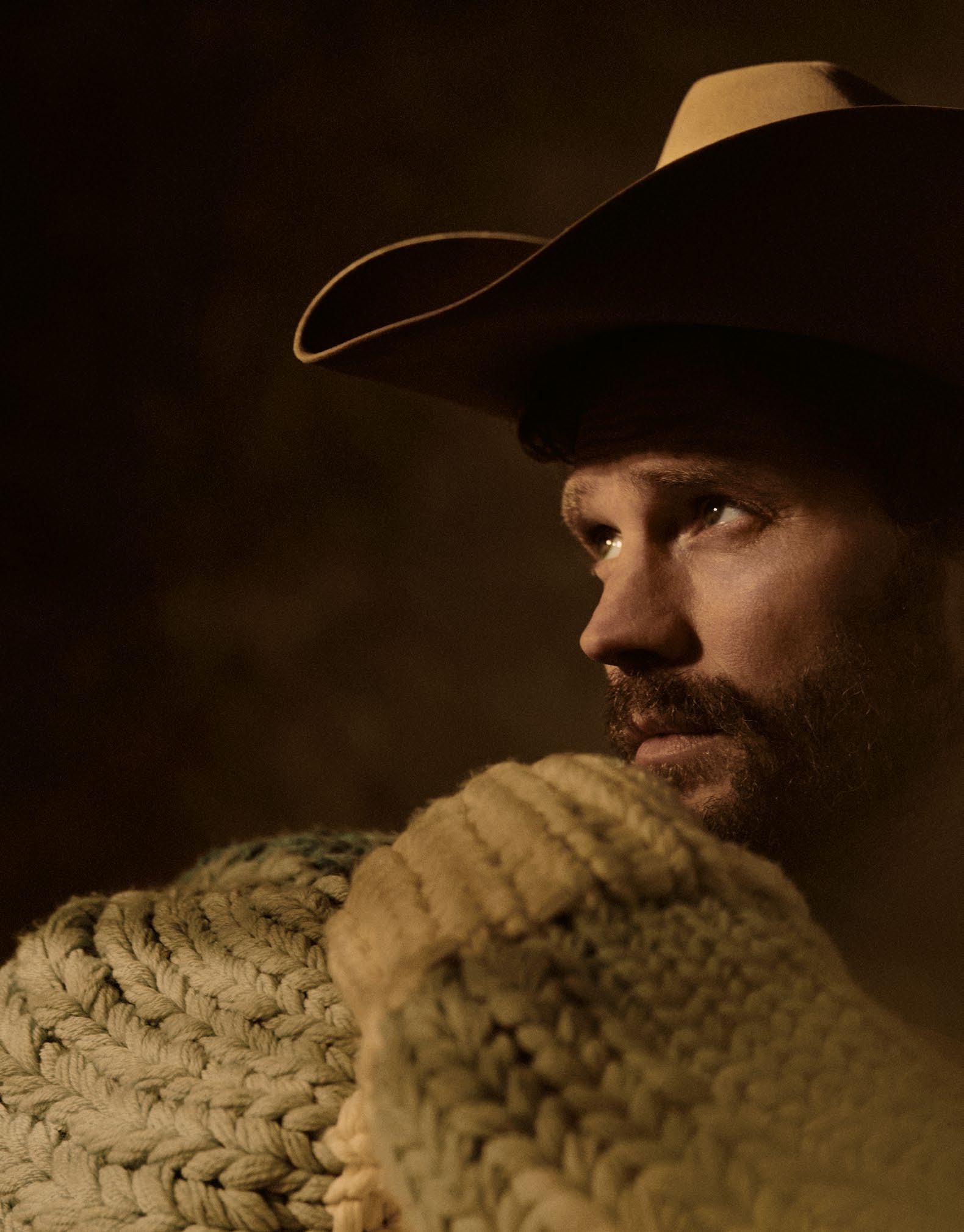

One of Netflix’s hottest names, JAMIE DORNAN nails everything he touches, from fashion to film to fatherhood
PHOTOGRAPHY BY
BOO GEORGE
FASHION DIRECTION BY
LUKE DAYWORDS BY
Jamie Dornan is having a ball. The second season of his madcap show The Tourist is streaming on Netflix, and he and his wife, Amelia, have just been on a mini break in New York City, sans kids, for the first time in forever. “Mom and Dad hitting the town,” Dornan says, laughing. He makes fun of himself for becoming one of “those people” — tame, mild mannered, even middle-aged — who, on a date with his wife at The Polo Bar amid all the “flash and decadence,” pulled out a deck of cards to play a game before heading home at a very reasonable hour.
It is a bit different from when Dornan was coming to New York in his early 20s, he says, when he was one of the most soughtafter male models in the world, fronting campaigns for Dior and Calvin Klein and forming an “it couple” with Keira Knightley. “In my 20s and early 30s, I was very much still going at 1 a.m.,” he says with a grin. “Now that is very rare. Now I’m a big golfer.”
The sought-afterness, however, hasn’t
changed. Dornan recently starred in Loewe’s spring campaign, and judging by the rabid thirst in response to images of him slouching in an oversize knit pullover (not to mention the BTS videos posted by the brand’s creative director, Jonathan Anderson), he remains an elite sex symbol. “He is my number-one celebrity crush,” a friend messaged me in response to a post-interview selfie I posted with Dornan, before I received about a trillion more saying the same.
But for someone who spent his formative years in such a sexualized spotlight, Dornan doesn’t seem to have attached any of his identity to it. Nor does he seem to have developed any appetite for the gaze. “It was good to me,” he says of his modeling career. “I saw it as an opportunity to enjoy myself, to have fun with my friends and enjoy being in my 20s in the greatest city on earth. But I didn’t love the process, and I still don’t like the act of being photographed. I find it very exposing having a photograph taken. There’s nothing to hide behind.”
Performing is different, he says. Playing a character is different. When he is acting, “there’s usually a funny accent you’re doing
or physicality or something to hide behind. You have words you have to say. So it’s not as vulnerable as being just you, trying to express your own self.”
There is a light drizzle over Central Park when we meet to chat, and Dornan walks using a rolled-up umbrella stick to practice his golf swing. There is a bright sort of buoyancy about him, gleeful Golden Retriever energy — or the wide-eyed wonder of a particularly happy child, which Dornan says he was. Born in 1982 in County Down, Northern Ireland, he grew up in Belfast. He describes his father — an ob-gyn who delivered both Protestant and Catholic babies throughout the country’s most fractured period — as the most optimistic person imaginable.
Throughout our afternoon, he talks about the support, encouragement, and affection he received from his parents and two older sisters. He has spoken at some length in past interviews about the weight of losing his mother to cancer in his early teens (and then losing four of his closest friends in a car accident shortly thereafter), but always as a way to describe the tenderness of his family and describe the worldview and
capacity for joy they provided for him. He is full of emotion and pride as he talks about his father, who passed away just as Dornan began work on Kenneth Branagh’s semiautobiographical film Belfast. Dornan, who plays a version of Branagh’s father, received a Golden Globe nomination for the role. “He would have loved it,” Dornan says of his dad.
In The Tourist, Dornan is in a different gear entirely, playing a man suffering from amnesia who has dropped to Earth in the Australian outback. In a lot of ways, it is the most classic leading role Dornan has ever played. His character is a heroic problem solver and charmingly prone to accidents, with the native intelligence of a super spy but a patchy recollection of pop culture (he knows what sombreros are, but not the Spice Girls). He sort of knows how to drive but doesn’t know what Mexican food he likes. He gives savvy relationship advice but doesn’t know (until he knows) that he likes to be choked during sex. The show, which was number one on Netflix upon release and the most-watched show in the UK last year, is a lot of fun. So much of that fun is watching Dornan’s character rediscover, by trial and
» In my 20s and early 30s, I was very much still going at 1 a.m. Now that is very rare. Now I’m a big golfer. «
JAMIE DORNAN


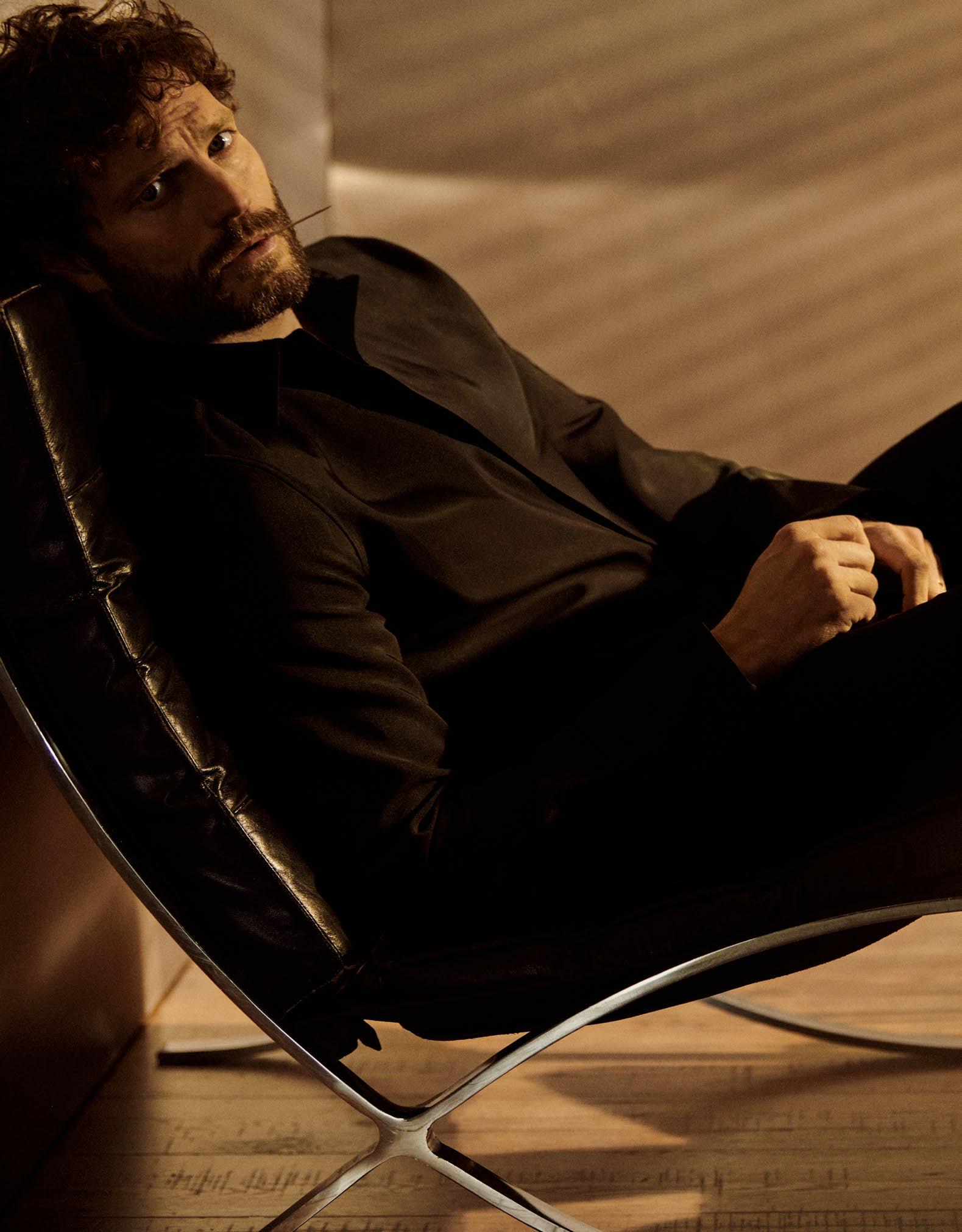 SAINT LAURENT BY ANTHONY
SAINT LAURENT BY ANTHONY
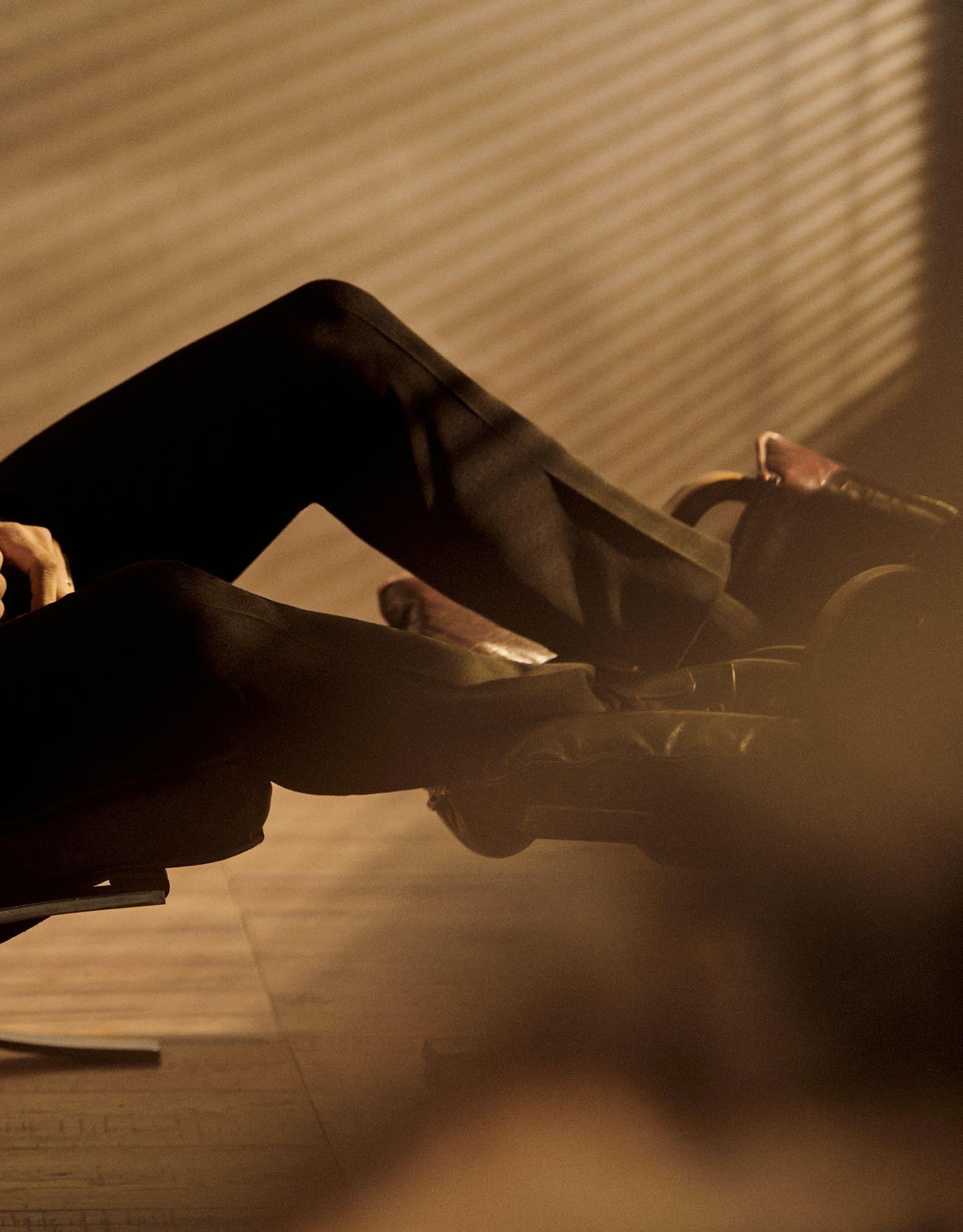
error, who he is through what he likes. Do I like alcohol? he wonders. Oh yes, he finds, and then worries, Do I maybe like it too much? In the second season, The Tourist brings his character home to Ireland in search of more revelations about his identity, and plants him right into a generations-deep Hatfield-and-McCoy-type feud. High jinks ensue.
Playing with the show’s notion of selfdiscovery, it is fun to think aloud with Dornan about figuring out who we are, determining what we like, and considering alternative selves. Growing up in Belfast, Dornan played rugby, and apart from the freeing fun he felt in playing characters, messing around on the pitch with his mates was his favorite thing ever. If his sisters hadn’t talked him into appearing on a reality show about aspiring models, and if he hadn’t then become one of the most famous faces in fashion, and if he hadn’t made his acting debut in Sofia Coppola’s Marie Antoinette — if he hadn’t made a life out of playing dress-up and makebelieve — Dornan says he would probably be equally happy and fulfilled working on the local sports news desk in Belfast.
“When I was younger, I probably only ever foresaw a life in and around sport,” he says. “I probably wasn’t good enough to play any sport professionally, but I was decent at lots of sports. I’m the kid who watched Jerry Maguire [the 1996 movie starring Tom
Cruise] and wanted to be him. I thought being a sports agent would keep you close to the excitement and the drama and the intensity of it. I ended up nowhere near that.”
Mostly he credits the 2013 BBC drama The Fall as his sliding-doors moment. “It changed my life,” he says. In its three seasons, set in Belfast, Dornan plays a brooding serial killer in a kind of meditative dance with an investigating officer played by Gillian Anderson. He is phenomenal — so good and smoldering that it made perfect sense when the artist and filmmaker Sam Taylor Wood cast him as the romance novel object of desire Christian Grey in 50 Shades of Grey, a movie so commercially successful that Dornan and costar Dakota Johnson made two sequels.
When I jokingly ask if Dornan can still perform the pommel horse exercise he does in 50 Shades, we turn back to sports as metaphor for performing. “I think a lot of actors are frustrated sports people,” he says. “There are loads of parallels — the risk involved in doing a movie, exposing yourself like that, and the preparation to get yourself game ready.”
When he leaves New York, Dornan is going into a game-readiness preparation for his next project, something he cannot talk about. As he sees his calendar filling up for the foreseeable future, he identifies additional parallels between the athlete and the actor in him. As in sports, so much of an actor’s life, self, and identity is wrapped up in the action, he says, and the clock is always ticking.
» I think a lot of actors are frustrated sports people. There are a lot of parallels. «
JAMIE DORNAN

“I think I am a bit wayward if I don’t know what I’m doing next,” he says. With a project, “you’ve just got something to build toward, don’t you? And it gives you a structure. And there’s so much about this job that I love — so much about the freedom and the unknown, the excitement of not knowing what’s next. I’ve just had eight months off, which is the longest I’ve ever had off in 20 years, and it’s been incredible. I’ve been doing every school run. Been on loads of holidays with the family. But I couldn’t tell you what continent I’m going to spend 2025 on. That’s fucked up!”
With a lot of award-season buzz around Irish actors and storytellers this year (including for his pals Cillian Murphy and

Andrew Scott), Dornan talks about his pride in the rising tide that lifts all. “Something maybe we helped to start with Belfast,” he says. Not that he’s boasting. If anything, Dornan sounds profoundly clear-eyed about his life, work, and career trajectory.
“A lot of actors say every job could be the last job,” he says. “And it could, of course, but I’m also aware that I’m on a decent run at the moment. The last three or four, five — 12 years, really — I’ve been in a good place. I’m doing a lot of good work. Is every one a runaway hit or critical success? No, but nobody has that. But I’ve been consistently employed, which is a great thing.”
He continues: “And I have a million things that I know are keeping me employed for the next couple of years. Then, who knows? Maybe someone pulls the rug and it’ll stop, but I’m aware that things are good and I take comfort in it. But then does that mean you can’t get excited? You get nominated for a Golden Globe and then suddenly — I’m a very competitive person — you’re like, ‘No, fuck this, maybe I do want to win an Academy Award.’ But if you’re driven by that, you’re fucked. I think I’ve always [thought of my acting career as] similar to when I was modeling. I see it as a job, and not put any more pressure on it other than it’s going well, I’m paying for the mortgage, I’m paying for the kids. And we’ve got a great life.”
In May, Dornan will turn a sage 42 and (much to my dismay) remains utterly unbothered by any sort of diet or workout routine — he just still looks that way. “Good genes, maybe?” he asks with a shrug and a smile. “Put it this way,” he says, “when I was the face and body of Calvin Klein underwear, I wouldn’t have been in the gym for months. In my 20s, I would say I didn’t go to the gym once. That worked for a long time, and it’s not like I am now suddenly going to deprive myself of carbs or something.”
Whatever he is doing is clearly working. And — unlike his character in The Tourist — Dornan has figured out who he is and what he likes. Mostly it’s making his three daughters laugh. “I love it,” he says. “I’m fucking silly as fuck with them. I can be really silly.” •
 GIVENCHY jacket, $2,900, T-shirt, $590, pants, $1,700, and shoes, $725. Opposite, top: BOTTEGA VENETA coat, tank top, and pants, prices upon request. IWC watch, $5,250. Opposite, bottom: GIORGIO ARMANI jacket, $2,595, T-shirt, $325, and pants, $1,495. VACHERON CONSTANTIN watch, $44,500.
GIVENCHY jacket, $2,900, T-shirt, $590, pants, $1,700, and shoes, $725. Opposite, top: BOTTEGA VENETA coat, tank top, and pants, prices upon request. IWC watch, $5,250. Opposite, bottom: GIORGIO ARMANI jacket, $2,595, T-shirt, $325, and pants, $1,495. VACHERON CONSTANTIN watch, $44,500.

Galerie Half’s CAMERON SMITH helped shape the homes of Hollywood’s finest, but what about the one he saved for himself?
PHOTOGRAPHY BY
BILLAL TARIGHTWORDS BY
MARTHA HAYES
A
at both sides of the fireplace in the living room. “They are incredibly comfortable,” says Smith. “I don’t say luxurious often, but it does feel like that when you’re sitting on them. At the same time, they’re not precious, just beautifully designed.”


Feature - House
» The energy was perfect. The house didn’t need to be changed; it just needed to be updated. «
CAMERON SMITH
he enclosed balcony off the primary bedroom in the 1928 Spanish Colonial home in Pasadena that antiques dealer Cameron Smith shares with his husband, design consultant PJ Faulstick, has proved so popular with guests that it now has its own name: the perch.
With its dark-beamed ceiling and beautiful dimmed lights (thanks to Poul Henningsen wall sconces), the inside-outside space, which features Japanese teak chairs and a 16th-century stone slab table, sits up to nine people. “When we have people over, everyone ends up there,” explains Smith, cofounder of Galerie Half on Melrose Avenue.
Hosting is a frequent occurrence for someone as connected and coveted as Smith. His visionary gallery turned store has been attracting A-list clients — including Jennifer Aniston, Mary-Kate and Ashley Olsen, and Ellen DeGeneres — since it opened in 2009. Flammarion recently published Galerie Half: Selected Work Spaces ($125), a lauded retrospective of the midcentury design
masterpieces he has curated over the years.
Within Smith’s home, just like in his store and evidenced through his new book, is a harmonious juxtaposition that defines the Galerie Half style, such as a Persian Bibikabad rug draped over a Clements Design custom linen sofa in the living room or carved Bamana Jonyeleni figure from the 1930s on top of a contemporary black Axel Vervoordt table. “It is just furniture at the end of the day, but also there are a million opportunities to do something that simple incorrectly,” he says.
“We have a lot of friends who want to come over and stay the whole weekend,” he says. “PJ is the cook and really gets into it, hitting the right farmers’ markets two or three days before. We never did this in our last house.” No one is more surprised than Smith, a Mulholland Drive resident for eight years, by their friends’ willingness to make the journey to Pasadena.
“They have to travel five times as long,” he says. “I never intended to move to Pasadena. You could have said, ‘Do you want to move to Oklahoma or Pasadena?’ Because they’re both that far away in my head. When
PJ took me to look at houses, I was like, ‘It’s never going to happen.’ ”
What changed? “The frustration of what’s happening in L.A. with house flipping and the destruction of some of the most beautiful buildings,” he says. “Our history is being wiped out to make a dollar. We were only finding houses with white marble floors and LED lights and everything else that’s terrible. We would have had to pay to clean up someone else’s mess.”
As soon as Smith laid eyes on this untouched property, with its stucco walls and arches, the search was over. Located a mere 11 miles from downtown L.A., it has an out-oftown serenity thanks to a scenic backdrop of the San Gabriel Mountains and an abundance of 100-year-old olive trees.
“The owner passed away and her niece was selling it, but she was holding out because everyone wanted to change it and take the Spanish out,” he says. “There was love there; the energy was perfect. It didn’t need to be changed; it just needed to be updated. I grew up in adobe houses in Santa Fe. That’s what I wanted.”
The main structural issue was too many rooms. (“In the 1930s, there was a room for everything. There was a room for gloves!”) The couple didn’t need that many rooms, nor did they want an open concept. “It just needed air to breathe,” says Smith.
Essential to the renovation, which took three and a half years to complete, was bringing on Clements Design, the L.A.-based mother-and-son duo (Kathleen and Tommy) whose clients include Jennifer Lawrence and Kendall Jenner. It was a no-brainer — Smith has known the designers since before they started their company — but he was still overwhelmed by the result, which includes skylights to bring light into the stairwell, primary shower, and dressing room.
“That really changed things because there were gloomy parts of the house and now this gorgeous light pours down,” says Smith, who also enlisted the help of celebrated landscape designer Scott Shrader to create alfresco spaces functioning as additional rooms.
“It’s simple, clean, and beautiful. The Clementses gave me a furniture floor plan at



the start, which all designers should do right away,” he says. “I knew it wasn’t going to happen overnight, so that allowed me time to gather some of the more intimate pieces.” Smith has been sourcing since he was a child. His mother, now 92, was an interior designer and instilled in him an eye for design.
“We all had our jobs to do, and once they started to see the pieces, it made everything they included, like the drapery, make sense. Even my mom, who walked in and grabbed as much as she could in one hand, was like, ‘They’re good.’ She knows. There is a difference between just curtains and thick draping curtains that are meant to fall in a certain way. Things like that, I never would have been able to do. We all put in our own ingredients.” Smith’s ingredients are antiques he has sourced, pieces anyone who has walked into Galerie Half and felt inspired by his curation would recognize immediately.
Like buying a house in Pasadena, Smith never planned to publish a book. “The pretense of doing a book about yourself or your own store seems very ego-driven to me,” he says. He was persuaded after a conversation with Trevor Cheney, a designer working at Galerie Half who introduced him to Lena Winkler at Studio Small, who collated all the images. “Once I saw
her perspective, I was like, ‘Oh, they’re like puzzle pieces of art,’ and that made it special.”
When it comes to specific pieces for Smith’s own home, less is more. His personal collection includes Native American sculptures and ceramics that belonged to his parents (“My mom didn’t have one kachina doll; she had 70. I’m very different. I just have one”) and carefully curated artworks that include Veladura Nocturna, 2018, by Mexican artist Gonzalo Lebrija and Game Keeper, a 2004 photograph by Collier Schorr.
But the anchor of the house is a fulllength oil portrait of a young boy by Owe Zerge that is mounted next to the fireplace. It’s a particularly valuable painting Smith persuaded a client and friend to buy in 2003 — only for the individual to give it back to him as a generous housewarming present. “It has a beautiful representation not only as a piece of art but also as a piece of friendship,” he says.
Who was the friend? “Oh, just a famous, funny lady,” Smith says. He is, after all, as modest and unpretentious as Galerie Half — and the perch where he entertains — itself.
“She cracks me up on the daily.” Does she have a house in Montecito? “She just might,” he says, laughing. •
» I knew the renovation wasn’t going to happen overnight, so that allowed me time to gather some of the more intimate pieces. «
CAMERON SMITH

Thanks to an Italian spaghetti Western aficionado, the CALIFORNIA RODEO scene is saddling up for the next generation

PHOTOGRAPHY BY MARK
GRIFFIN CHAMPIONWORDS BY AMELIA
FLEETWOOD

» IRON/Rodeo is part of a mission to preserve Western culture and the craftsmanship that belongs to it. «
STEFAN SIEGEL

ity folk dressed in off-duty denim and plaid, mostly in their 20s and 30s, step out of their Teslas in a pasture parking lot. Their EVs line up against trailers and rodeo horses munch hay as the sun pours through the pepper trees, lighting up the 400-acre AB Ranch. Built in the early 1900s and situated just outside Santa Paula, it forms the picturesque backdrop for fashion entrepreneur Stefan Siegel’s latest venture, IRON/Rodeo: a day of barrel racing, roping exhibitions, live country music, art, vintage clothes, and home-style cooking that will be attended by 500 people, including DJ Diplo and Gigi and Bella Hadid.
“IRON/Rodeo is part of a mission to preserve Western culture and the craftsmanship that belongs to it, as well as just getting these Gen Z kids — and kids in general — out. People are so attracted to the lure of the American West, the iconic cowboy, the dreams of open space. Adventures still exist in people’s minds. People are seeking more of a connection to nature and moving away from the disconnect of modern life,” Siegel says.
Siegel, a rugged Italian in his 40s, might seem an unlikely rodeo and 10-gallon hat aficionado, but like Sergio Leone, the Italian director of The Good, The Bad and The Ugly, the lure of the American West has lassoed him — hard. He grew up in a small town in the Italian Alps famous for its horses. His childhood was spent in the saddle, shaped by the European versions of cowboy-and-Indian TV series and spaghetti Westerns. “Watching them really impacted me,” he says. “When I finally moved to L.A. in 2017, I immediately began riding Western as a nod to my childhood dreams, then started competing at local rodeos and ranch sorting and cuttings.”
An invitation to Circle Bar Ranch, Texas, was a turning point. An inspiration for the hit TV show
Yellowstone, it also sparked his imagination for a more inclusive rodeo. As Siegel delved further into the culture, he attended more than 100 rodeos in rural Texas while traveling in his Airstream during the pandemic. He met saddlemakers, leather workers, silversmiths, and boot makers. “I saw the parallels to the fashion designers,” he says.
Finally the idea for IRON/Rodeo crystallized: a live event of rodeo and artisanal crafts that would indulge his newfound passion and celebrate the American Western traditions for a broader audience. A
“My First Rodeo” for city folk, if you will.
With LeAnn Rimes in the audience, her version of “The Star-Spangled Banner” rings out and the arena springs to life. Glittering cowgirl drill teams lope around in perfectly synchronized patterns, followed by Latino trick ropers, liberty acts, and barrel races that enrapture the mostly non-horsey crowd. “I focused on including the less dangerous events, so no bull riding or bucking broncos here,” Siegel says, smiling, as a cowboy ropes a cow as he would on a real ranch. As the master of ceremonies explains the specifics of what is on show, punters eat chili served up by local restaurant and resort Cuyama Buckhorn.
Outside the arena, vendors sell cowboy hats, boots, and an array of vintage clothing. A nearby rustic barn acts as a gallery where, in one stall, photographer Lauren Purves hangs her photographs of horses and cowboys. In another, the Object Hotel’s Grocery Gallery showcases painter Jeff Bohm’s colorful and raw paintings of simpler times. A barber shop and a tattoo parlor confirm you are definitely not in Kansas anymore.
“It’s not a real rodeo,” says model and entrepreneur Kassidi Batt, “but it can be a new way to do rodeo. By the end of the day, people were out in the arena taking turns with the kids riding the horses. It’s so much more interactive. And I loved how IRON/Rodeo focused on females taking the lead.” Laura at Velasco Silversmithing, who sells jewelry including talisman silver rings and boleros, agrees: “We all love what Stefan is doing, bringing Western culture and art to the forefront — I’ve sold more in four hours than I have over the past four months.”
Siegel’s own brand, Not Just a Label, is an e-commerce platform for emerging fashion designers from all over the world. He wants to re-create the model for American artisans and makers as a means of cultural preservation. “Here in America we have so many artists without a physical or digital outlet to share their craftsmanship in a profitable way,” he says. “I want to offer this outlet so that we don’t run the risk of many of these skills not being passed down to the next generation and disappearing for good.”
His pet peeve is seeing rodeo kids carrying the American flag in clothes made overseas. His dream is to feature only made-in-America products, bringing manufacturing back to home soil. He expands, “If you finance the careers of local makers, they will spend the money within a 100mile radius. That’s what we have seen with Not Just a Label. You can change entire districts economically for the better.”
Yellowstone costume designer Johnetta Boone, who also attended, explains the enduring appeal of the cowboy aesthetic. “Everyone either wants to be a cowboy or fall in love with one; that’s what’s at the root of the allure. The style is a nod to being rebellious and tough. It’s a boldly American statement. But I would say the majority of the guests had never been on a horse.”
As the sun fades, the last few stragglers make their way back to their cars. Siegel sighs. “It was all a dream,” he says. “It almost felt like a movie set.” As he waxes romantic, a mother in pink cowboy boots asks her two kids, “Isn’t this better than being at home playing Fortnite?” •









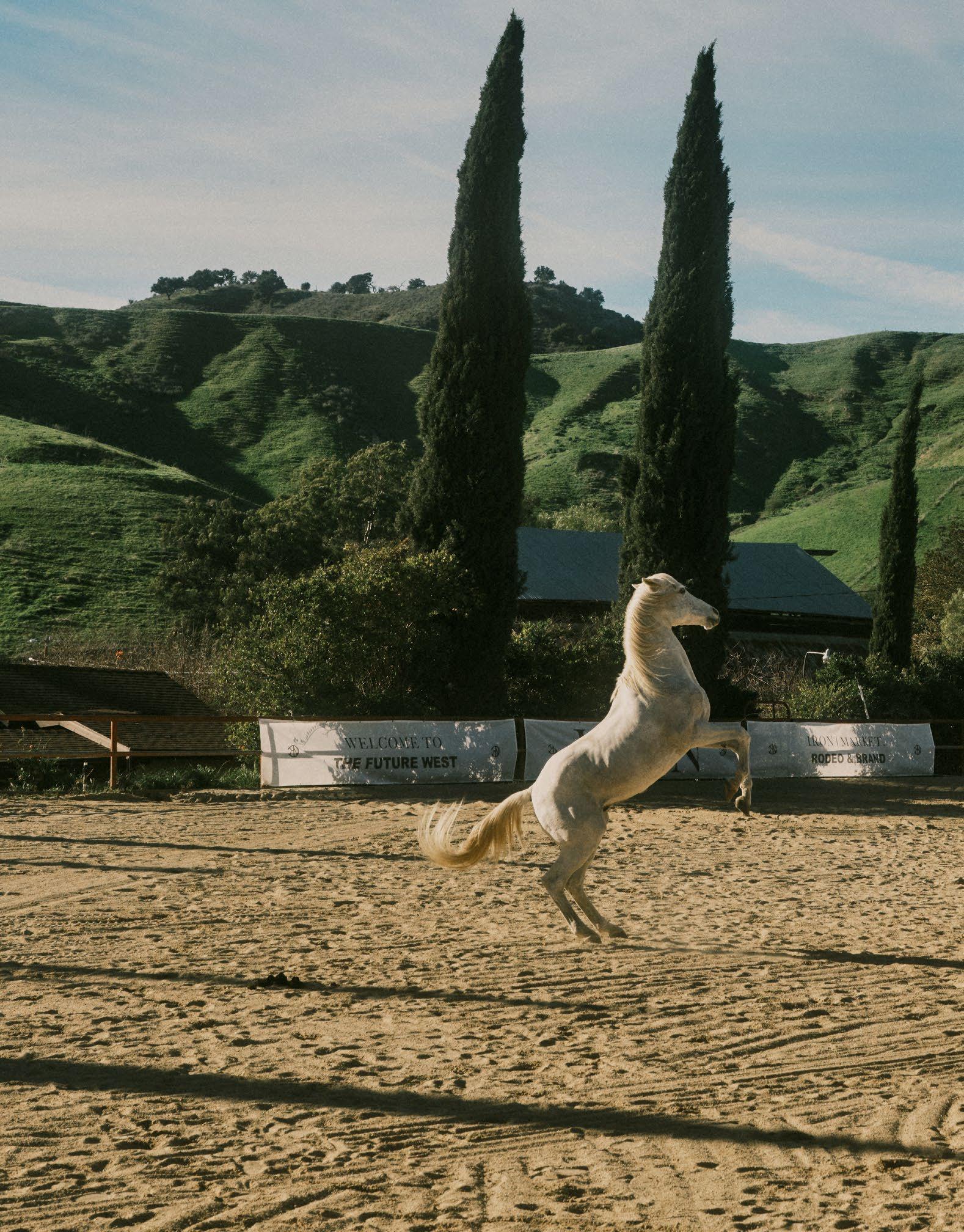

» People are so attracted to the lure of the American West, the iconic cowboy, the dreams of open space. «
STEFAN SIEGEL










● When it was released in 1984, a Macintosh retailed for $2,495 (or about $7,500 today). As of May 3 of the same year, 70,000 units had been sold, and before the end of the year that number reached almost 250,000.
● The Macintosh made its television debut during Super Bowl XVIII in a commercial titled “1984” that was directed by Ridley Scott as an allusion to George Orwell’s 1949 novel of the same name. Starring English actors David Graham and Anya Major, it depicted a dystopian future and earned the one-minute spot (which had a whopping $900,000 budget) a place on Advertising Age’s list of 50 greatest commercials and a coveted Clio Award.
● A word-processing package called MacWrite came installed and, for the first time on a personal computer, it offered an array of fonts — Times Roman, Bondi, and Helvetica — that could be used in plain, italic, bold, outline, or shadow text.
● When he began working on the computer in 1979, Raskin named it for his favorite variety of apple, the McIntosh (although he tweaked the spelling).
● Weighing 16.5 pounds, the beige-colored computer included the monitor with an integrated floppy drive, a keyboard, a single-button mouse, and a sturdy softsided carrying case.
Introduced at Apple’s annual meeting on January 24, 1984, the Macintosh heralded an impending revolution in the personal computer industry — and foreshadowed the meteoric ascent of Apple over the next 40 years under the leadership of Steve Jobs and, later, Tim Cook. Described at the time in a New York Times hardware review, Erik Sandberg-Diment wrote of the Mac, “Unpacked, it sits like a towering, square, robotic Cyclops, its single disk drive an offcenter mouth. The machine definitely has personality.” But unpacking
the story of its parentage is more involved. Originally conceived in 1979 as the brainchild of interface expert Jef Raskin to deliver computers to the mass market, the project’s team included Burrell Smith, Bill Atkinson, Andrew Hertzfeld, and Apple cofounder Steve Wozniak. In 1981 Jobs replaced Raskin, and with Wozniak recovering from injuries sustained in a plane crash, Jobs’ control of the project (and future at the company) was solidified. Within three years the Mac was delivered, and Apple took its first big bite out of the consumer technology market.











